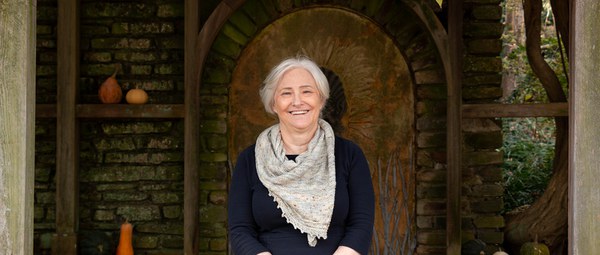Jean De Groot, ordinary professor at the Catholic University of America, is a fellow in Byzantine Studies. Her research report, “Hellenistic and Byzantine Mechanics: From Experience to Nature and Back Again,” described the mechanical thought of Hero of Alexandria’s Mechanics and the Mechanical Problems ascribed to Aristotle.
Q&A with Jean De Groot
What did “mechanics” encompass in antiquity?
Ancient mechanics articulated mathematical principles of the motion of bodies but in slightly different terms than the Newtonian mechanics most people today are familiar with. The motion of circles—singular or in contact with one another—was an important feature of ancient descriptions of motion. The concentric circles or moving radius principle, for example, describes the relative speeds of circles with a common center rotating together. The smaller inner circle moves slower than the larger outer one since the latter covers a larger arc in the same amount of time.
The principle was first articulated in a treatise, Mechanical Problems, attributed to Aristotle but probably written by a student of his, and is repeatedly referred to in both Arabic and Byzantine texts as marvelous and fundamental. Even before it was articulated in mathematical texts, however, people would have been familiar with circular movement through experience with devices like the potter’s wheel—a potter would know the different parts of the wheel are moving at different speeds. The same idea was recognized in the earliest, pre-Ptolemaic astronomy—by observing the night sky, you notice that stars are moving in circular patterns at different speeds from a common center, the polestar. This observation fostered the ancient understanding that the stars are on a rotating sphere.
What does the text by Hero you are studying describe about mechanics?
Hero of Alexandria articulated the concentric circles principle as well as Archimedean principles of balance in a treatise from the first century CE. The text was written in Greek but only survives in its entirety in Arabic, at least as far as we know, in a text entitled On the Lifting of Heavy Weights. Along with the Aristotelian Mechanical Problems, a short summary of Hero became the basis of the work of Galileo’s forerunners many centuries later.
Hero is famous for articulating what are often called the five simple machines—the pulley, lever, wheel and axel, wedge, and screw. He showed how complex machines are combinations of these. One of the complex machines Hero described is a set of consecutive interlocking gears, called the baroulkos, where a crank attached to the first gear consequently turns the whole set. Hero showed how the addition of each new set of a larger and smaller wheel successively decreases the amount of force necessary for someone cranking the handle to lift a weight.
Hero wanted to raise the status of mechanics as a mathematical science because he believed there was more to be discovered from articulating the principles. His treatise made an extra effort to make the mathematical character of the principles more precise and also to articulate the idea of force—what keeps a body in motion or why it is possible to overcome a great weight. The ideas arose from experience but were given a theoretical formulation.
What does this tell us about the scientific and intellectual life of the time?
These texts are not just describing the machines mathematically and in terms of static geometry but also as mathematical principles of motion with useful applications. The pulley or windlass, for example, where a weight is attached to a rope which goes over or around a wheel, was found on every ship and used to lift sails and loads. Hero gives advice on how to construct machines for use or entertainment, describing when you want to use metal parts or to use rope rather than animal sinew which is too elastic, for example. He also addressed how to scale up machines for real-world application: building a trebuchet large enough to launch projectiles at siege ships demands considerations of supportive structures very different from constructing a tabletop version. This kind of mechanics has an interesting concreteness and longevity—I’ve found very similar explanations of the windlass in US naval manuals and explanations of the motion of circles from modern foundries.
I’m also working on the legacy of these ways of thinking through the Byzantine writer Georgios Pachymeres, who wrote a paraphrase of Mechanical Problems (which he believed was written by Aristotle) that has become part of the Western early modern tradition. I’m looking into whether we ought to consider Pachymeres as a separate contributor to the mechanical tradition, which has led to discussions with other Byzantine Studies fellows on Byzantine historiography. Byzantium has often been looked upon only as a precursor to early modern Western history, but this was not how the Byzantines saw themselves; they were working within their own intellectual tradition seeking wisdom and useful knowledge.
May Wang is postgraduate writing and writing fellow.

